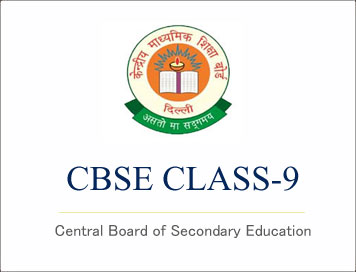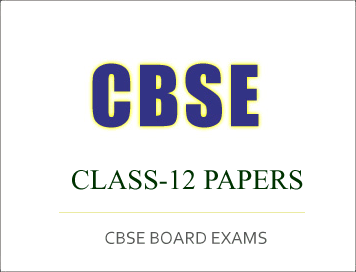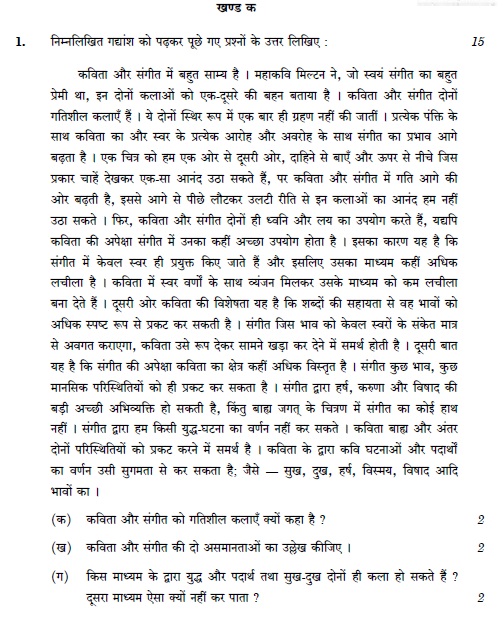CBSE PORTAL : CBSE 2017-18 Syllabus Class-9 : National Cadet Corps | |
- CBSE 2017-18 Syllabus Class-9 : National Cadet Corps
- CBSE 2017-18 Syllabus Class-9 : Music
- CBSE Class-12 Exam 2017 : Foreign Scheme Question Paper, Hindi (Core)
- CBSE Class-12 Exam 2017 : Delhi Scheme Question Paper, Traditional Indian Textiles
- CBSE Class-12 Exam 2017 : Delhi Scheme Question Paper, Garment Construction
- CBSE Class-12 Exam 2017 : Delhi Scheme Question Paper, Basic Pattern Development
- CBSE 2017-18 Syllabus Class-9 : Painting
| CBSE 2017-18 Syllabus Class-9 : National Cadet Corps Posted: 22 Aug 2017 11:12 PM PDT
CBSE Class-9 Syllabus 2017-18
Subject: National Cadet Corps 1. The training curriculum of the NCC is primarily focused on character building, inculcating leadership qualities and skill enhancement through structured academic syllabi, practical training and opportunity for exposure/interaction beyond a cadets’ immediate environment, and thereby enabling them for a brighter and progressive future. 2. The Aims of NCC: (a) To develop character, comradeship, discipline, secular outlook, spirit of adventure and the ideals of selfless service amongst the youth of the country. (b) To create a human resource of organized, trained and motivated youth to provide leadership in all walks of life and always available for the service of the nation. (c) To provide a suitable environment to motivate the youth to take up a career in the Armed Forces. 3. Conduct of NCC Training Curriculum (a) Institutional Training: Conducted in respective schools/ colleges by Associate NCC Officers (ANO), Permanent Instructional (PI) staff as part of the school curriculum. (b) Annual Training Camps (ATC): To provide practical outdoor training, each NCC cadet attends 10 days camp in the second year of junior and senior division. These camps are conducted by respective NCC units. (c) Centrally Organized Camps (COC): These camps are conducted at all India level, as National Integration Camps, attended by cadets from all states. (d) Adventure Training: To inculcate a spirit of adventure and team work, NCC cadets undergo various adventure activities such as para jumps, para sailing, trekking, mountaineering and sailing expeditions. (e) Attachment Camps: To give the cadets exposure to interact with Regular Army, Navy and Air Force units, attachment camps are conducted, where cadets are attached with these units. To motivate cadets to join the Armed Forces attachment of cadets with Indian Military Academy is also conducted. (f) Youth Exchange Programme (YEP): Selected cadets also get an opportunity to visit various foreign countries as part of YEP. In one year approximately 100 cadets visit 10 -11 countries. (g) Social Service Activities: The cadets also undertake various social service activities, by conduct of rallies to bring awareness and participate in various relief programmes/activities whenever called for. CLICK HERE TO DOWNLOADCourtesy: CBSE |
| CBSE 2017-18 Syllabus Class-9 : Music Posted: 22 Aug 2017 10:39 PM PDT
CBSE Class-9 Syllabus 2017-18
Subject: MusicI. Brief history of Carnatic Music with special reference to Saint Purandara dasa, Annamacharya, Bhadrachala Ramadasa, Saint Tyagaraja, Muthuswamy Dikshitar, Syama Shastry and Swati Tirunal. II. Definition of the following terms : Sangeetam, Nada, raga, laya, tala, dhatu, Mathu, Sruti, Alankara, Arohana, Avarohana, Graha (Sama, Atita, Anagata), Svara - Prakruti & Vikriti Svaras, Poorvanga & Uttaranga, Sthayi, vadi, Samvadi, Anuvadi & Vivadi Svara - Amsa, Nyasa and Jeeva. III. Brief raga lakshanas of Mohanam, Hamsadhvani, Malahari, Sankarabharanam, Mayamalavagoula, Bilahari, Khamas, Kharaharapriya, Kalyani, Abhogi & Hindolam. IV. Brief knowledge about the musical forms. Geetam, Svarajati, Svara Exercises, Alankaras, Varnam, Jatisvaram, Kirtana & Kriti. V. Description of following Talas : Adi - Single & Double Kalai, Roopakam, Chapu - Tisra, Misra & Khanda and Sooladi Sapta Talas. CARNATIC MUSIC (VOCAL) Theory (Code No. 031) Format of Written Examination for Class - IX 1. Long Answer (Essay) a. Biography 05 Marks b. Musical Forms 05 Marks Short Answers with Examples c. Writing of minimum three Raga-lakshana from prescribed list in the syllabus. 05 Marks d. Description of talas, illustrating with examples. 05 Marks e. Short notes of minimum 05 technical terms from the topic II. 05 Marks Note : Examiners should set atleas seven questions in total and the students should answer five questions from them, including two Essays, two short answer and short notes questions based on technical terms (topic-II) will be compulsory. CLICK HERE TO DOWNLOADCourtesy: CBSE |
| CBSE Class-12 Exam 2017 : Foreign Scheme Question Paper, Hindi (Core) Posted: 22 Aug 2017 12:54 AM PDT |
| CBSE Class-12 Exam 2017 : Delhi Scheme Question Paper, Traditional Indian Textiles Posted: 22 Aug 2017 12:41 AM PDT |
| CBSE Class-12 Exam 2017 : Delhi Scheme Question Paper, Garment Construction Posted: 22 Aug 2017 12:35 AM PDT |
| CBSE Class-12 Exam 2017 : Delhi Scheme Question Paper, Basic Pattern Development Posted: 22 Aug 2017 12:30 AM PDT |
| CBSE 2017-18 Syllabus Class-9 : Painting Posted: 22 Aug 2017 12:07 AM PDT
CBSE Class-9 Syllabus 2017-18
Subject: PaintingLearning outcomes / Objectives : Students opting painting as an additional subject are able to : • Develop their aesthetic sence. • Appreciate the beauty in lines, forms and colours. • Understand the fundamentals of Visual Arts. (Elements and Principles) ability to apply them to a specific aesthetic intent. • Get the knowledge and skills in the use of basic tools, medium and techniques required to works from concept to finished product. • Develop memory and observation power through the study / exercise in still life and painting composition. • Develop their mental faculties for proper maintenance and arrangements of things in their painting practicals as well as in their life. i. Still life study Study of a group of two or three arranged object from a fixed point of view in colours. Group may include, vegetables, foliage and objects of daily use. ii. Simple composition based on any one form of folk Art / Tribal Art such as Madhubani, Warli, Alpana, Rangoli, Mandarna etc. iii. Sketches from life and nature in pencil and Ink. iv. Submission of portfolio consisting of five selected works done during the year. Marking Scheme 100 Marks i. (a) Accurate drawing with proper composition of objects. (20) (b) Compositional arrangement with due emphasis on the subject matter. (20) ii. Treatment of media (colours) with an appropriate colour scheme in still life one panting composition. (10) iii. Originality, Creativity and overall impression (10) iv. Sketches from life and nature in pencil and ink. (20) v. Submission of part-folio consisting of 10 selected works done during the year. (5 still-life and 5 painting-composition) (20) CLICK HERE TO DOWNLOADCourtesy: CBSE
|
| You are subscribed to email updates from CBSE PORTAL : CBSE, ICSE, NIOS, JEE-MAIN, AIPMT Students Community. To stop receiving these emails, you may unsubscribe now. | Email delivery powered by Google |
| Google Inc., 1600 Amphitheatre Parkway, Mountain View, CA 94043, United States | |



No comments:
Post a Comment